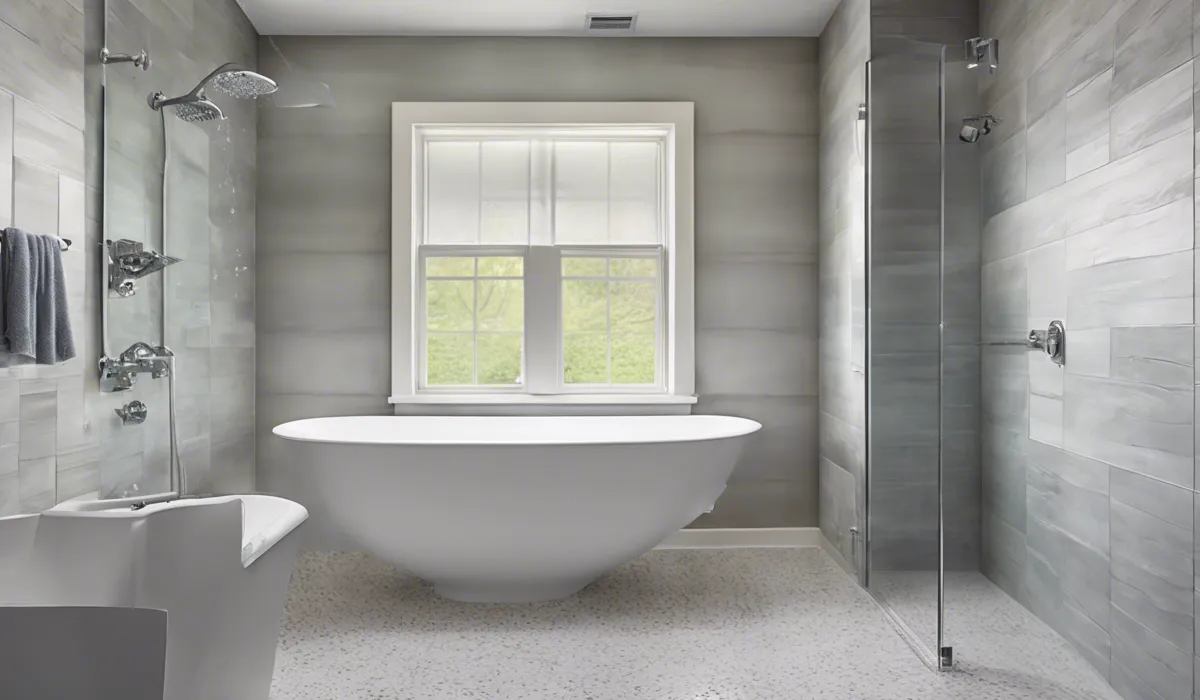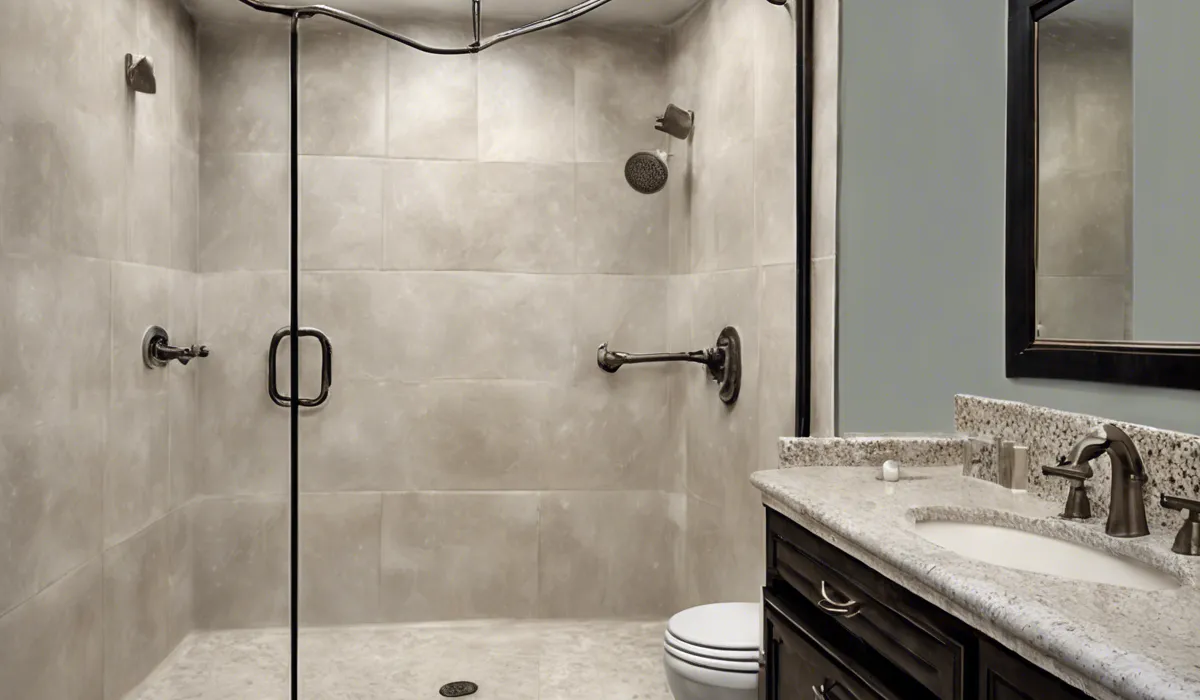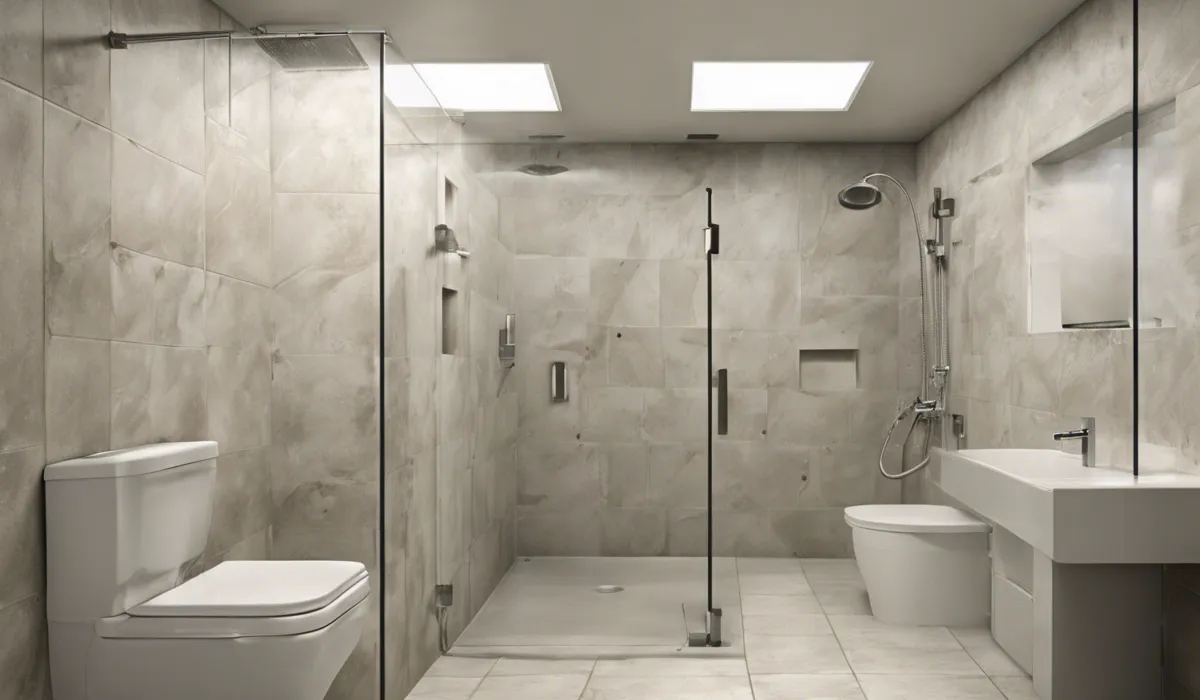Yes, you can use mold-resistant drywall in a shower, but it must be properly sealed with waterproofing materials like a vapor barrier and tile backer to prevent moisture penetration and ensure durability in the wet environment.
Understanding Mold Resistant Drywall

Definition of Mold-Resistant Drywall
Mold-resistant drywall is a specialized construction material designed to withstand moisture and reduce the risk of mold growth.
Unlike standard drywall, this innovative product contains fibers and compounds that repel water and prevent the conditions that allow mold and mildew to flourish.
Composition and Characteristics
The composition of mold-resistant drywall includes a core of gypsum plaster, which is then treated with water-resistant additives.
The surface paper, which is normally a food source for mold, is replaced with fiberglass, eliminating an essential ingredient for mold development. This change in materials makes the drywall less hospitable to mold spores.
How It Differs from Regular Drywall?
Regular drywall absorbs more moisture, making it a potential breeding ground for mold.
In contrast, mold-resistant drywall is engineered to repel water and resist mold growth, a critical difference in areas prone to dampness.
Typical Applications for Mold-Resistant Drywall
Commonly, mold-resistant drywall is used in parts of the home that experience high humidity levels, such as bathrooms, basements, and kitchens.
It is particularly beneficial in any area where moisture is present and the risk of mold is a concern.
Suitability of Mold Resistant Drywall for Shower Areas

Moisture and Humidity in Shower Environments
Shower areas are inherently humid and wet, which can compromise the integrity of construction materials.
Mold-resistant drywall, when used in showers, must be able to withstand constant exposure to water and steam.
Challenges for Drywall in Wet Areas
Traditional drywall can swell, deteriorate, and become a host for mold when exposed to water.
This is why choosing the right type of drywall for wet areas like showers is crucial for the longevity and health of a home.
Manufacturers’ Specifications for High Moisture Areas
Manufacturers of mold-resistant drywall provide specific guidelines for its use in high moisture areas.
They often recommend additional waterproofing measures to ensure the drywall’s performance in these challenging environments.
Comparison with Other Materials Used in Showers
When compared to alternatives like cement board or tiles, mold-resistant drywall is easier to install and more cost-effective.
However, it requires proper sealing to be effective in wet areas. Cement board, for instance, is inherently more resistant to moisture and is a common choice for areas with direct water exposure.
Best Practices for Installing Mold Resistant Drywall in Showers

Pre-Installation Considerations
Prior to installation, it is essential to assess the shower area’s ventilation and determine the level of moisture exposure the drywall will face.
Selecting the appropriate thickness and type of mold-resistant drywall for the specific application is also crucial.
Necessary Precautions to Enhance Mold Resistance
Enhancing mold resistance involves taking steps such as applying a vapor barrier behind the drywall and using a waterproof joint compound.
These precautions help prevent water from seeping into the drywall and creating a habitat for mold.
Installation Process and Tips
The installation process begins with measuring and cutting the drywall to fit the shower area.
It is important to leave a small gap between the drywall and shower base to prevent wicking of water.
Fastening the drywall securely to the studs and applying the waterproof joint compound follows suit.
Post-Installation Care and Maintenance
After installation, maintaining the drywall involves regular inspections for moisture and ensuring that the bathroom is well-ventilated.
Any signs of water damage or mold should be addressed immediately to prevent larger issues.
FAQs About Mold-Resistant Drywall in Showers
Can mold-resistant drywall be used as a backer for shower tiles?
Yes, mold-resistant drywall can be used as a backer for shower tiles, but it must be covered with a waterproof membrane or vapor barrier to prevent moisture damage.
Is mold-resistant drywall enough to prevent mold growth in shower areas?
Mold-resistant drywall is more resistant to mold growth than regular drywall, but without proper sealing and waterproofing, it is not foolproof in high-moisture areas like showers.
What additional waterproofing is required when using mold-resistant drywall in a shower?
When using mold-resistant drywall in a shower, it is essential to apply a waterproof membrane, vapor barrier, or tile backer board over it to fully prevent moisture penetration.
How does mold-resistant drywall compare to cement board for use in showers?
Mold-resistant drywall is less durable in wet conditions than cement board, which is specifically designed for use in wet areas and does not require a waterproof membrane when used as a tile backer.
Can you paint mold-resistant drywall in a shower area?
Yes, you can paint mold-resistant drywall in a shower area, but it should be coated with a waterproof paint and ideally only used outside the direct wet zones, as even mold-resistant drywall can degrade with constant moisture exposure.
Final Thoughts
Mold-resistant drywall is an option for shower areas, but it demands proper sealing with waterproofing materials.
A vapor barrier and tile backer are essential to protect against moisture and maintain the wall’s integrity. Without these precautions, the drywall won’t withstand the humid conditions of a shower.
